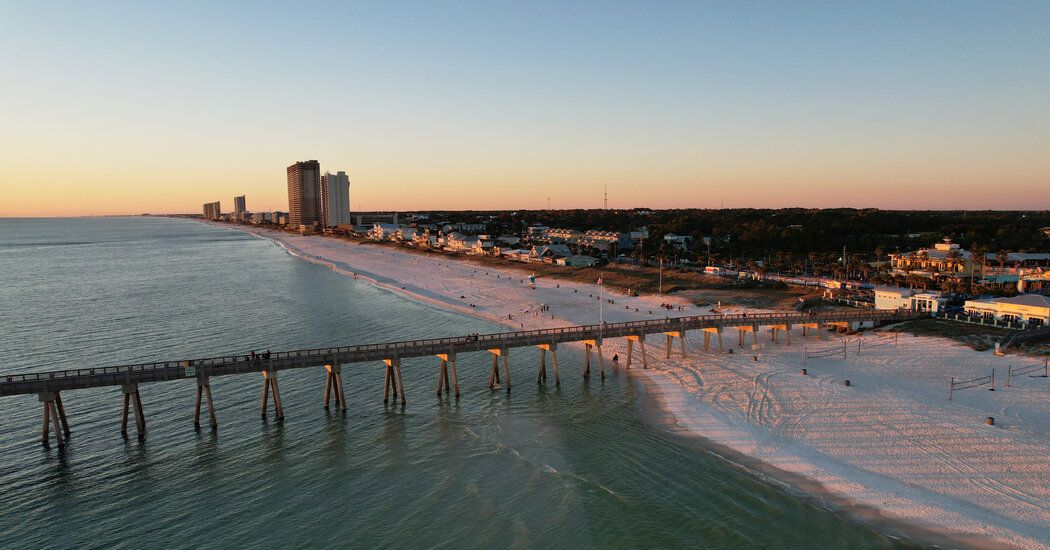11 Have Died in Rip Currents Along the Gulf Coast. Here’s How to Escape One.
In another swimming-related episode, Ryan Mallet, a former N.F.L. quarterback, drowned on Tuesday in Destin, Fla., after emergency medical workers responded to assist six swimmers who struggled to make it back to shore. He was 35. No rip currents were reported in the area, officials said in a statement, but some of the things people can do to escape a rip current can also be used to avoid drowning in calming waters as well.
What is a rip current?
Rip currents are riverlike channels that move away from the shore at high speeds and typically extend from near the shoreline to past the line of breaking waves. Rip currents form as waves disperse along the beach, causing water to become trapped between the beach and a sandbar or another shallow spot, and also near the underwater parts of structures like jetties and piers.
According to the National Oceanic and Atmospheric Administration, rip currents typically reach speeds of one to two feet per second; some have been measured as fast as eight feet per second. High winds and large waves can also increase the chances that a rip current will form.
Rip currents can be spotted from the shore, especially at lower tide. They typically appear as darker, narrow gaps of water between areas of breaking waves and white water. If you aren’t sure if what you are seeing is a rip current, ask the nearest life guard.
What’s going on in Florida?
Florida’s deadly spate of drownings can be attributed in part to a long period of onshore flow, when the prevailing wind is pointed toward the shore, said Wright Dobbs, a meteorologist with the National Weather Service in Tallahassee. An offshore flow has been moving in over the past few days, he said, and lighter wind speed over the next few days could generally ease the risk of rip currents, he said.
Source: The New York Times


